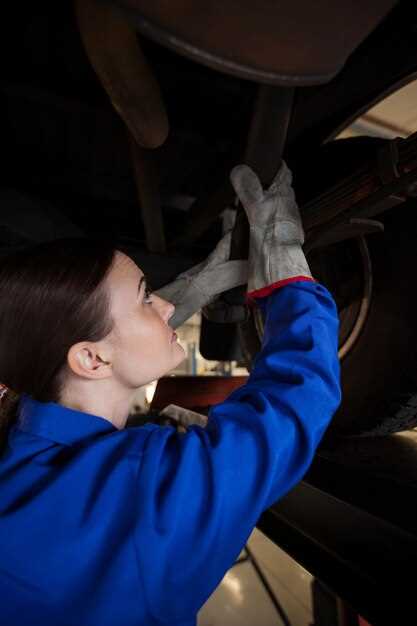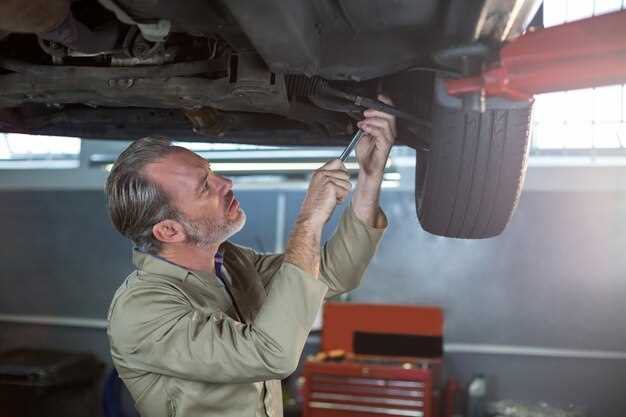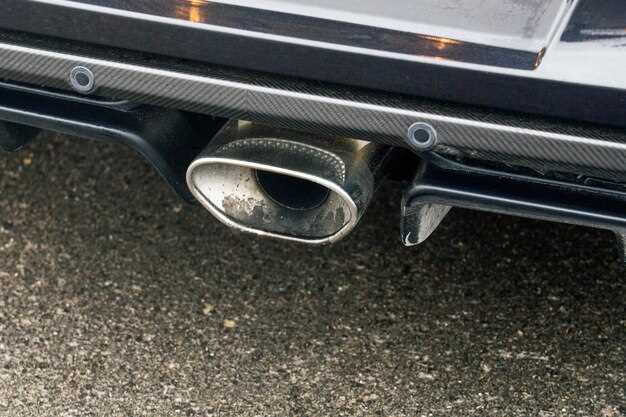
How to Fix a Loud Muffler
- Arthur Rodriquez
- 0
- Posted on

Experiencing excessive noise from your vehicle’s exhaust system can be a common frustration for many drivers. A noisy muffler not only creates an unpleasant driving experience but can also indicate underlying issues that may require immediate repair. Understanding the causes of muffler noise is crucial to ensure the longevity and performance of your vehicle.
In this guide, we will explore various methods to identify and address the noise generated by a worn-out or malfunctioning muffler. From simple DIY fixes to professional repair options, we aim to equip you with the knowledge necessary to silence that annoying sound effectively. By addressing muffler noise promptly, you can maintain your vehicle’s efficiency and avoid potential complications down the road.
Whether you’re a seasoned mechanic or a novice car owner, this comprehensive guide will provide practical insights and tips on how to tackle the issue of a noisy muffler. Let’s delve into the various approaches available for diagnosing and repairing muffler noise, ensuring a quieter, more enjoyable ride for all.
Identifying the Source of Muffler Noise

Determining the origin of muffler noise is essential for effective repair and maintenance of your vehicle. Start by listening carefully to the sounds produced during idle and acceleration. A loud rumbling or hissing noise often indicates exhaust leaks or a failing muffler.
Examine the muffler visually for rust, holes, or damage. Look for areas where the metal might be thin or corroded. These conditions commonly lead to increased noise levels and require prompt attention. Also, inspect the exhaust pipes and joints for any signs of wear or separation, which can contribute to unwanted sound.
Next, check the mounting brackets and hangers. Loose or broken mounts can cause vibrations that amplify noise. If these components are compromised, they may not support the muffler correctly, leading to further deterioration and increased noise.
Additionally, consider the age of the muffler. Over time, internal components can wear down, resulting in louder exhaust sounds. It may be beneficial to assess whether the muffler has reached the end of its service life and requires replacement.
In some cases, the engine may be the source of the noise, rather than the muffler itself. Listen for engine misfires or excessive vibrations that can be mistaken for muffler issues. Performing a thorough inspection can help ensure that all potential sources of noise are addressed effectively.
When identifying muffler noise sources, thorough examination and attentive listening are vital. Taking these steps will provide insight into the necessary repairs and help restore your vehicle’s quiet operation.
Step-by-Step Solutions for Muffler Noise Reduction

Reducing the noise from a loud muffler can significantly enhance your driving experience and ensure compliance with local noise regulations. Here are actionable steps to address muffler noise effectively.
Step 1: Inspect the Muffler
Begin by visually inspecting the muffler for any signs of damage, such as rust, holes, or cracks. Use a flashlight to look for worn-out parts that may contribute to excess noise. A thorough inspection is crucial before proceeding with any repairs.
Step 2: Check Connections and Hangers
Examine the connections between the muffler and exhaust system. Loose or damaged hangers can cause vibrations, amplifying noise. Ensure that all components are securely attached and replace any broken hangers or brackets.
Step 3: Apply Exhaust Sealant
If you identify small leaks around the muffler or joints, apply a high-temperature exhaust sealant. This can fill gaps and prevent exhaust gases from escaping, which often leads to added noise. Follow the manufacturer’s instructions for proper application and curing time.
Step 4: Install a Muffler Silencer or Insert
Consider installing a muffler silencer or insert designed to reduce sound production. These devices fit inside or over your existing muffler and are an effective way to dampen noise. Ensure compatibility with your muffler type for optimal results.
Step 5: Replace the Muffler if Necessary
If the muffler is excessively damaged or noisy despite repairs, replacing it may be the most viable solution. Select a muffler that is designed for quieter operation while matching your vehicle’s specifications for optimal performance.
Step 6: Regular Maintenance
To prevent future noise issues, perform regular maintenance on your exhaust system. Schedule periodic inspections and address any small issues before they escalate into larger problems. Keeping the system in good condition helps maintain a quieter vehicle.
By following these steps, you can successfully repair and reduce muffler noise, leading to a more comfortable driving experience.
When to Seek Professional Muffler Repair Services
If you notice a significant increase in noise from your vehicle, it may indicate that your muffler requires immediate attention. Unusual sounds, such as loud rattling or hissing, can signify underlying issues that may worsen if not addressed promptly. Ignoring these signs often leads to more extensive repairs and can affect your vehicle’s overall performance.
Another reason to consult a professional is when you experience a reduction in fuel efficiency. A damaged muffler can disrupt the exhaust system’s function, leading to higher fuel consumption. If you find yourself frequently filling up the gas tank, a thorough inspection and necessary repairs could save you money in the long run.
Visual inspections can also reveal problems. If you notice rust, holes, or any signs of physical damage on the muffler, it’s time to seek help from a qualified technician. These issues can compromise the exhaust system and lead to increased noise and exhaust leaks, which could be hazardous.
Lastly, if your vehicle frequently fails emission tests, the muffler may play a critical role in how emissions are controlled. Professional repair services can ensure your muffler complies with regulations and operates effectively, preventing potential legal issues and costly fines.